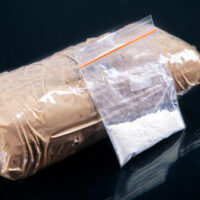Help Finding Public Drug and Alcohol Treatment in Ontario
This month, learn how to access public drug and alcohol treatment in Ontario in the next installment of Provincial Snapshot. Each month, we are outlining the steps you must take to access public drug and alcohol treatment in each province. This blog will detail how to access different levels of addiction and mental health care. If you or someone you know requires urgent help, please call 911. Drug and Alcohol Helpline If you have substance use problems, Ontario is one of the best provinces to be in! The province has set up a drug and alcohol helpline that is available 24/7 free of charge. Call to be connected with an information and referral specialist who is knowledgeable on all things public drug and alcohol treatment in Ontario. They can provide up to date information on treatment providers, crisis lines, self-help groups, distress centers, and family services. This includes giving you your closest outpatient office, detox clinic, or health unit. A special feature about this helpline is that they can provide current wait times for all provincially run facilities, giving you a good idea of what your immediate options are. The only thing to note is that this helpline only deals with Ontario and its publicly-funded options. Therefore, all the advice they give is for OHIP-funded facilities. This is a really good start, but if you are looking for private options as well, give our specialist a call and they can give you all the other options. Many Options to Access Public Drug and Alcohol Treatment in Ontario You may not need to go to an outpatient office like in other provinces for a referral to treatment. In Ontario, you can often get a referral from your family physician if they have a documented history of your mental health or substance use concerns. Addiction Supportive Housing (ASH) is a program designed for clients who have tried addiction treatment programs before and need some extra help transitioning to ‘real life’. Some clients may have tried a few times, but have not been able to make their recovery stick. Others may be at risk of homelessness and need a safe and supportive environment to continue their recovery. If a potential client is assessed as having a high probability of a successful recovery in this style of supportive housing treatment program they can be admitted. There are many ASH houses across the province, you can contact the previously mentioned helpline here to find your closest ASH program. If you are looking for public drug and alcohol treatment in Ontario and need some assistance, please contact our specialist. Be sure to check out the page on Toronto drug rehab and alcohol treatment programs. References: Drug and Alcohol Helpline ASH Program The post Help Finding Public Drug and Alcohol Treatment in Ontario appeared first on Canada Drug...
Alcohol Awareness Month: Targeting Underage Drinking
This year’s theme for Alcohol Awareness Month is Changing Attitudes: It’s not a ‘rite of passage’ in an effort to curb underage drinking. Since 1987, the National Council on Alcoholism and Drug Dependence (NCADD) in the USA has hosted Alcohol Awareness Month every April. It’s important to note that NCADD was founded by an Alcoholics Anonymous (AA) proponent. This means their focus is on abstinence and directing to teaching teens to say no to alcohol. During awareness months, NCADD spearheads events to educate the public on the prevention and treatment of alcoholism. This year they will be specifically helping parents in how to talk to their children and teens about the impact alcohol can have on their lives. Underage Drinking Underage drinking is considered one of the biggest public health problems in the USA. Alcohol is still the most used intoxicant by young people. 33% of 15-year-olds have had at least one drink, and 60% of 18 years olds have had at least one drink. A hidden danger is that while youth drink less frequently than adults, they consume 90% of their alcohol during binge drinking periods. Binge drinking is defined as 5 standard drinks for men and 4 standard drinks for women within a few hours. Keep in mind, most people don’t consume a standard drink. A standard drink contains 14 grams of pure alcohol which looks like a 12 ounce of beer with a 5% alcohol content or a 5-ounce glass of wine with 12% alcohol. How many people do you know who measure out 5 ounces of wine when they pour a glass? Even restaurants have a 6 or 9-ounce option when ordering wine, which instantly takes you over a standard drink. Prevention and Alcohol Treatment The age-old saying Monkey See Monkey Do is a saying for a reason. We are heavily influenced by our environment, especially during childhood. Children of alcoholics are between 4 and 10 times more likely to have alcohol use problems later in life than children with no close relatives who struggle with alcohol. However, the National Institute on Alcohol Abuse and Alcoholism (NIAAA) in the US offers scientific methods for underage drinking prevention. These include environmental interventions, individual-level interventions, school-based interventions, and family-based interventions. Environmental refers to making alcohol harder to get through laws and enforcement, which isn’t really something parents can control. However, the other three interventions are all variations of being involved in the child’s life. For example, making sure they are educated about alcohol and getting them involved in fun, sober activities. If you would like to learn more, the resources referenced here are linked below. Additionally, if you are concerned about a child or teen in your life, please contact our specialist here to learn about available resources near you. This website serves as your gateway to information on drug rehab and alcohol treatment programs in Canada, from Toronto drug rehab programs to Vancouver alcohol treatment programs, etc. References: NIAAA: Underage Drinking NIAAA: Why do adolescents drink, What are the risks, and How can underage drinking be prevented? NCADD: Alcohol Awareness Month The post Alcohol Awareness Month: Targeting Underage Drinking appeared first on Canada Drug...
Drug Fact Sheet: Fentanyl and Carfentanyl
Fentanyl and carfentanyl belong to the group of drugs known as opioids. They are currently both in the news in relation to the “opioid crisis” that is gripping North America, both Canada and the United States. Fentanyl was created for human use, while carfentanyl was only ever intended for large animal use like elephants. However, these substances are both being found in illicit drugs being marketed as heroin, MDMA, or cocaine. During Prohibition times in the USA, bootleggers used more and more unsafe chemicals in their alcohol to keep costs down and potency up. As the war on drugs continues in North America today, drug dealers are turning to substances that are stronger and cost less to manufacture. Police warn that street drugs are almost never what the dealer says, let alone a pure version. Fentanyl Fentanyl is approximately 100 times stronger than morphine and is prescribed for severe chronic pain. It is a depressant, meaning it slows the messages traveling between the brain and the physical body, which is why it helps alleviate pain symptoms. However, an overdose of fentanyl means its depressant qualities are heightened, leading to a relaxing of muscles in control of automatic functions like breathing. Carfentanyl Carfentanyl or carfentanil was first synthesized in 1974 as a variation (also known as an “analogue”) of fentanyl. It is the strongest commercial opioid, 100 times stronger than fentanyl, 5000 times stronger than heroin, and 10,000 times stronger than morphine. Carfentanyl affects the human body at only 1 microgram. It is used as a general anesthetic for large animals. The strongest fentanyl analogue designed for human use is sufentanil which is approximately 10 – 20 times less potent than carfentanyl. One shot of Naloxone, the opioid overdose reversal medication, is usually all that is needed for a heroin overdose. However, an overdose involving carfentanyl can take more than half a dozen shots of Naloxone to overcome. A dose of carfentanyl the size of a grain of rice can kill a human. Due to the intense toxicity of this substance, authorities consider it a possible biological weapon. In 2016, the Mounties seized a kilogram of carfentanyl in Vancouver that, due its purity, had the potential to kill 50 million people, more than our entire Canadian population. A spokesperson for the RCMP said when the police seize regular street drugs like cocaine and heroin the intent for the shipment is known. However, because carfentanyl is so potent, large shipments could mean much more sinister motives. Fentanyl and carfentanyl are some of the most toxic substances a human can ingest. If you are concerned about what could be in your drugs and are looking to make a change, contact our specialist for help and resources. This website is a resource of drug rehab and alcohol treatment programs throughout Canada – from Vancouver to Toronto, Calgary to Ottawa, and everywhere in between. Rehab from drugs and alcohol addiction is possible. References Alcohol and Drug Foundation: Fentanyl PubChem: Carfentanil Guardian: Alarm After Canada Carfentanil Bust CBC: Deadly Opioid Carfentanil Bound for Calgary Seized in Vancouver The post Drug Fact Sheet: Fentanyl and Carfentanyl appeared first on Canada Drug...
Vancouver Mayor Calls for Decriminalization to Combat Overdose Deaths
Mayor Robertson Concerned About Overdose Deaths Following the release of the number of overdose deaths across the country, Vancouver Mayor Gregor Robertson is calling for the decriminalization of personal drug use and possession. He has long looked at drug use as a health issue rather than a criminal justice issue. His recent announcement comes on the heels of learning that the opioid overdose crisis is killing an average of one person a day in his city. “This is not getting better and it’s time for more disruptive and more innovative action to save lives” said Robertson during an interview on March 28th. The Mayor did not say police should ignore petty drug use, however did say he was in discussions with Chief of Police Adam Palmer. The Vancouver Police Department stated they have a “progressive drug policy that does not target individual drug users unless that drug use interferes with public safety”. How Could Decriminalization in Vancouver Work? Decriminalization is a hot button topic right now. However, the terms decriminalization and legalization are often used interchangeably despite important differences. Decriminalization means no criminal penalties would apply to those found with small amounts of illicit drugs, however may be subject to an administrative penalty such as a fine. The manufacture and distribution of illicit drugs remains illegal and unregulated under decriminalization. The Global Commission on Drug Policy, as well as the Canadian Drug Policy Coalition recommend the idea of a “sanctuary city” as a way for cities to de facto decriminalize personal drug use and possession. Trialing a concept like this could be perfect for BC as the province has often been an innovator in drug policy. It has been almost 2 years since the April 16, 2016 declaration of a public health emergency in BC due to the amount of overdoses and deaths. Since then, as the Mayor said, the opioid crisis has only worsened. As the number of overdose deaths for 2017 are being tallied, it seems set to out pace 2016 by 30%. An estimated 4000 Canadians lost their lives to overdoses, almost double motor-vehicle crash fatalities. Nearly 10% of these overdose deaths happened in Vancouver. It is evident something needs to change as the current tactics have done nothing to slow the death rate. If you have a friend or family member who needs help, please contact our specialist. References: Vancouver Mayor Calls for Drug Decriminalization After Record Year for Opioid Overdoses The Escalating Toll: 2017 set to be Worst Year in Canada for Overdoses Provincial Health Officer Declares Public Health Emergency Safe Injection Sites a Possibility for Waterloo Area The post Vancouver Mayor Calls for Decriminalization to Combat Overdose Deaths appeared first on Canada Drug...
The Connection Between Diet and Depression
Easter means chocolate around the house for the next few weeks, but did you know chocolate could lead to increased depression symptoms? In 2015, a study on nutritional medicine in the field of psychiatry was published in The Lancet scientific journal. Backed by a number of physicians, psychiatrists, and scientists, this study asserted that as much as diet is known to influence the health of a person’s cardio, endocrine, and gastrointestinal health, its impact on psychiatry is now indisputable. This group of academics advocates the “recognition of diet and nutrition as central determinants of both physical and mental health.” Modified Mediterranean Diet Study In 2017, a co-author of the aforementioned study, Dr. Felice Jacka published the results of her study The SMILES Trial. This trial followed 67 men and women who had a clinical diagnosis of moderate to severe depression and who reported eating a relatively unhealthy diet. Half were required to eat a healthy modified Mediterranean diet and attend dietary support sessions with a nutritionist. The other participants ate the same as they had previously but added social support sessions. The modified Mediterranean diet participants in this 12-week study all lowered their depression scores, with 32% going into remission. The participants who ate the same as before did improve but only 8% entered remission. Important to note is that caloric intake was not restricted, so the Mediterranean diet participants did not lose weight. What is a modified Mediterranean diet? It emphasizes real food essentially: whole grains, fruit, vegetables, legumes, low-fat dairy, raw nuts, lean protein, and olive oil. There are a number of factors that may contribute to the success of this diet in combating depression. Refined carbohydrates, found in sugar and flour, are responsible for mood destabilization by creating highs and lows in the levels of blood sugar, insulin, and hormones. Additionally, good fats and oils found in nuts and lean protein are essential for healthy brain functions. Depression Tackled in Baby Steps Depression is hard to shake because it robs a person of their motivation or ability to change things like diet. Almost a chicken and egg scenario, when they are depressed they gravitate towards comfort foods that are usually high in refined sugar and carbohydrates, saturated and trans fats, and salt, like cookies, pizza, and chips. This sort of food contributes to depression, thereby continuing this vicious cycle. If you or someone you know is struggling with severe depression and a healthy diet switch is not in the cards currently, starting with traditional methods like therapy and or medication is great. With professional counseling and medication, a person’s mental health may improve enough to feel ready to tackle their eating habits. If you are looking for further mental health resources, please contact our specialist for help. References: The Lancet: Nutritional medicine as mainstream in psychiatry ABC: How diet can affect mental health: the likely link between food and the brain Harvard Health: Diet and depression Psychology Today: Clinical trial finds diet works for depression The post The Connection Between Diet and Depression appeared first on Canada Drug...







